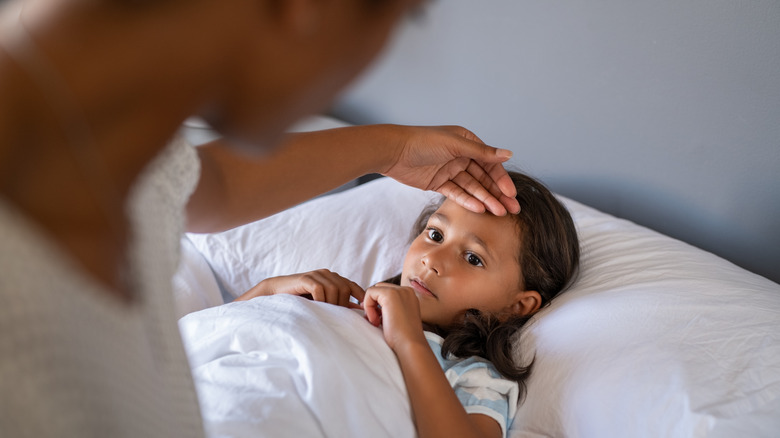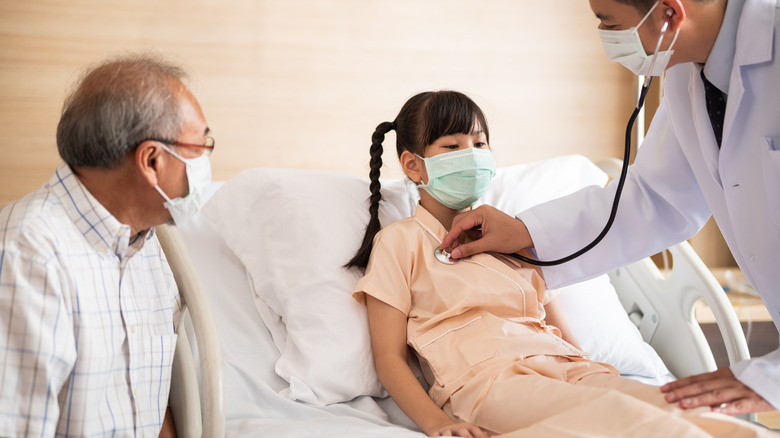Why Doctors Are More Concerned About RSV Now Than In The Past
Across the country, cases of respiratory syncytial virus (RSV) are climbing fast. While outbreaks of RSV are common at this time of year, we're also still seeing other illnesses like COVID-19 and the flu. And doctors are growing concerned as more and more Americans test positive for RSV.
RSV is a respiratory illness that affects the lungs and respiratory tract, according to the Mayo Clinic. Most older kids and adults who get RSV experience symptoms similar to the common cold, but the illness can be severe for infants, older adults, and anyone with a compromised immune system. Typical symptoms include a sore throat, runny nose, congestion, cough, headache, and fever. But in severe cases, RSV can lead to bronchitis or pneumonia, with the patient experiencing wheezing, difficulty breathing, fever, severe cough, and bluish skin color. While recovery typically occurs within one to two weeks, severe infections can require hospitalization and can even cause death.
In fact, RSV is the top cause of hospitalization of infants in the United States (via the American Lung Association). If your infant is showing any signs of difficulty getting enough oxygen, such as nostril flaring, unusually fast breathing, or their lips turning blue, it's recommended to take them to the hospital immediately.
The worries of rising RSV cases
In parts of the U.S., hospitals are seeing an alarming surge in cases of RSV, according to U.S. News & World Report. Since so many infants and young children have been protected from many common viruses during COVID-19 lockdowns and preventive measures, their immune systems aren't prepared to fight off RSV. While fall, winter, and spring is the normal time for RSV cases to increase, the current surge is causing doctors to fear an influx of RSV, COVID-19, and flu patients all at once, potentially overwhelming hospitals.
According to the Centers for Disease Control and Prevention (CDC), the positivity rate was 15.5% as of October 15th, up from just 3.7% in early August. Rates haven't been this high since the summer of 2021 when the world began opening up again after COVID-19 lockdowns.
You can treat RSV at home, according to the Mayo Clinic. Take Tylenol to reduce fever, use nasal saline spray or suctioning to clear nasal passageways, and drink lots of fluids. If hospitalization is necessary, you may be treated with intravenous fluids and humidified oxygen. Just like with other viruses, you can prevent RSV by staying home when you're sick and washing your hands often.


